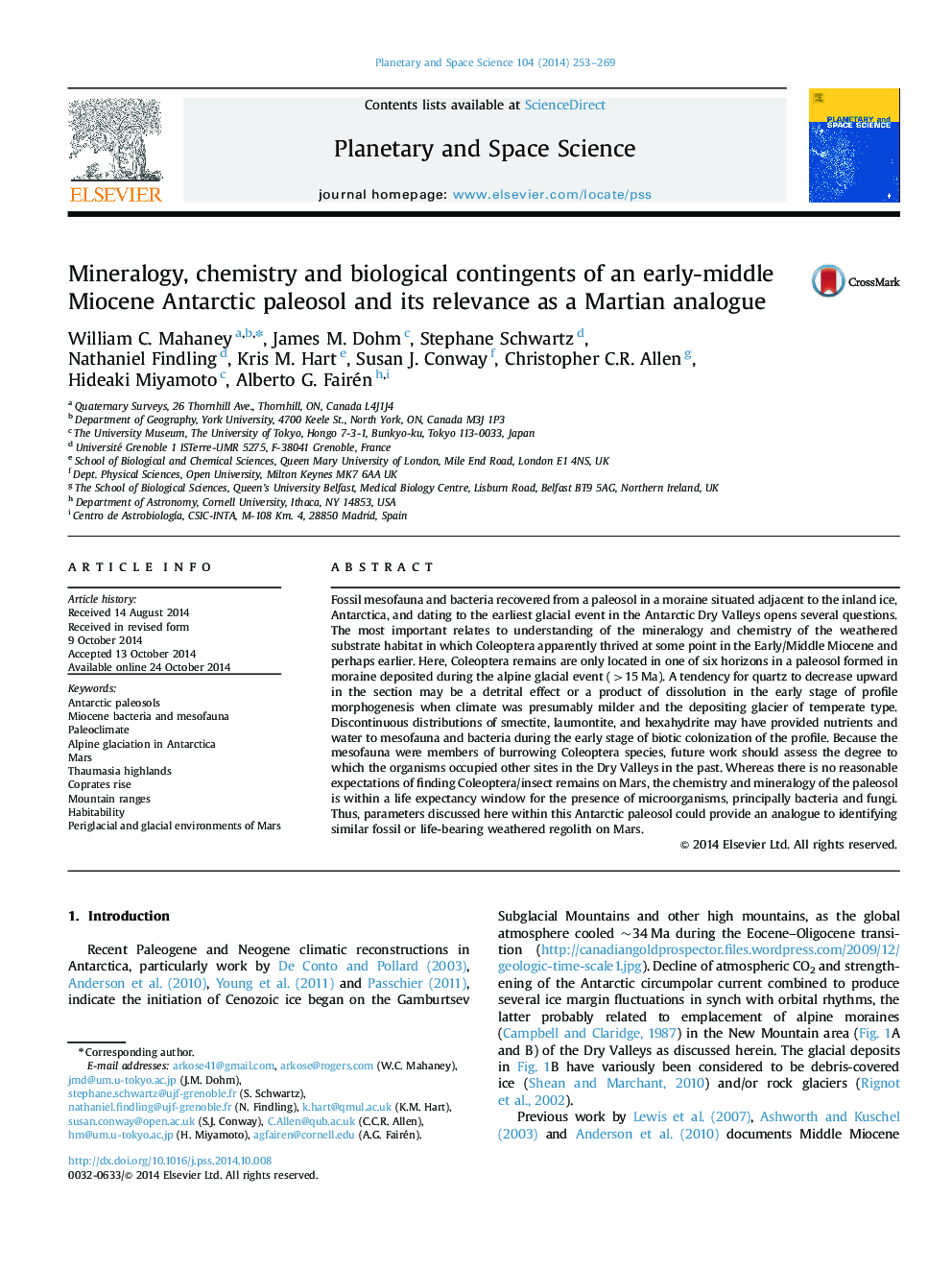| Article ID | Journal | Published Year | Pages | File Type |
|---|---|---|---|---|
| 1781021 | Planetary and Space Science | 2014 | 17 Pages |
Abstract
Fossil mesofauna and bacteria recovered from a paleosol in a moraine situated adjacent to the inland ice, Antarctica, and dating to the earliest glacial event in the Antarctic Dry Valleys opens several questions. The most important relates to understanding of the mineralogy and chemistry of the weathered substrate habitat in which Coleoptera apparently thrived at some point in the Early/Middle Miocene and perhaps earlier. Here, Coleoptera remains are only located in one of six horizons in a paleosol formed in moraine deposited during the alpine glacial event (>15Â Ma). A tendency for quartz to decrease upward in the section may be a detrital effect or a product of dissolution in the early stage of profile morphogenesis when climate was presumably milder and the depositing glacier of temperate type. Discontinuous distributions of smectite, laumontite, and hexahydrite may have provided nutrients and water to mesofauna and bacteria during the early stage of biotic colonization of the profile. Because the mesofauna were members of burrowing Coleoptera species, future work should assess the degree to which the organisms occupied other sites in the Dry Valleys in the past. Whereas there is no reasonable expectations of finding Coleoptera/insect remains on Mars, the chemistry and mineralogy of the paleosol is within a life expectancy window for the presence of microorganisms, principally bacteria and fungi. Thus, parameters discussed here within this Antarctic paleosol could provide an analogue to identifying similar fossil or life-bearing weathered regolith on Mars.
Keywords
Related Topics
Physical Sciences and Engineering
Earth and Planetary Sciences
Geophysics
Authors
William C. Mahaney, James M. Dohm, Stephane Schwartz, Nathaniel Findling, Kris M. Hart, Susan J. Conway, Christopher C.R. Allen, Hideaki Miyamoto, Alberto G. Fairén,
